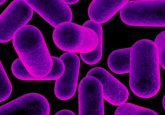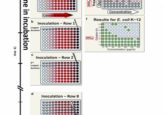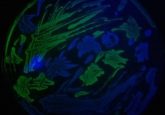Do Arctic microbes possess antibiotic properties?

Researchers are screening actinobacteria found in Arctic Sea invertebrates to find potential antibiotic candidates.
A collaboration between the University of Helsinki (Finland) and The Arctic University of Norway (Tromsø, Norway) has been scouring the Arctic Sea for novel actinobacteria with antivirulence activity. The team is hopeful that this work will contribute to the discovery of novel antibiotics that function by reducing bacteria’s virulence, rather than aiming to kill or stymie growth of bacteria, making these antibiotics less susceptible to resistance.
Research is continually being conducted to combat antibiotic resistance. One avenue being explored is concerned with the sources of these antibiotics. 70% of currently licensed antibiotics are derived from actinobacteria in soil, leaving other environments unexplored. This inspired the current research team to investigate the antibiotic potential of metabolites extracted from marine actinobacteria found in the Arctic against Enteropathogenic Escherichia coli (EPEC), a human pathogen causing intestinal infections. EPEC adheres to cells in the human gut, injecting virulence factors into the host cell and hijacking its molecular machinery, which results in host cell death.
The team developed and used antivirulence assays to screen extracted actinobacteria fractions for the identification of antivirulent metabolites. They tested compounds derived from four species of marine actinobacteria isolated from invertebrates found in the Arctic Sea off Svalbard (Norway) in August 2020. The bacteria were cultured, their contents extracted and separated into fractions. These fractions were then tested in vitro against EPEC-adhered colorectal cancer cells.

Deep-sea rocks are producing ‘dark oxygen’
Oxygen-producing rocks have been found on the deep seafloor, challenging what we know about oxygen production.
The researchers identified two unknown compounds with antivirulence activity: one from an unknown strain – called T091-5 – in the genus Kocuria and another from an unknown strain – T160-2 – of Rhodococcus. The compounds derived from these strains displayed complementary biological activity by inhibiting the formation of actin pedestals – key to pathogens adhering to the gut – by EPEC bacteria and inhibiting the binding of EPEC to the Tir receptor on the host cell surface, which is key to hijacking the intracellular machinery.
In the fifth fraction of T160-2, the team identified a growth-inhibiting compound. However, T091-5 displayed no growth-inhibiting compounds, meaning EPEC is less likely to evolve resistance against its antivirulence effects.
This study provided a base upon which further research into these compounds can be conducted. The techniques and methods used – bioassay-guided identification, HPLC-MS-based dereplication and phospholipid and peptide isolation – demonstrate the usefulness of this approach in screening for compounds capable of inhibiting EPEC virulence. However, more research is required to fully realize the antivirulent potential and mechanisms of actinobacteria’s metabolites.
“Here we show how advanced screening assays can identify antivirulence and antibacterial metabolites from actinobacteria extracts,” reported corresponding author Päivi Tammela. “We discovered a compound that inhibits EPEC virulence without affecting its growth, and a growth-inhibiting compound, both in actinobacteria from the Arctic Ocean.”





